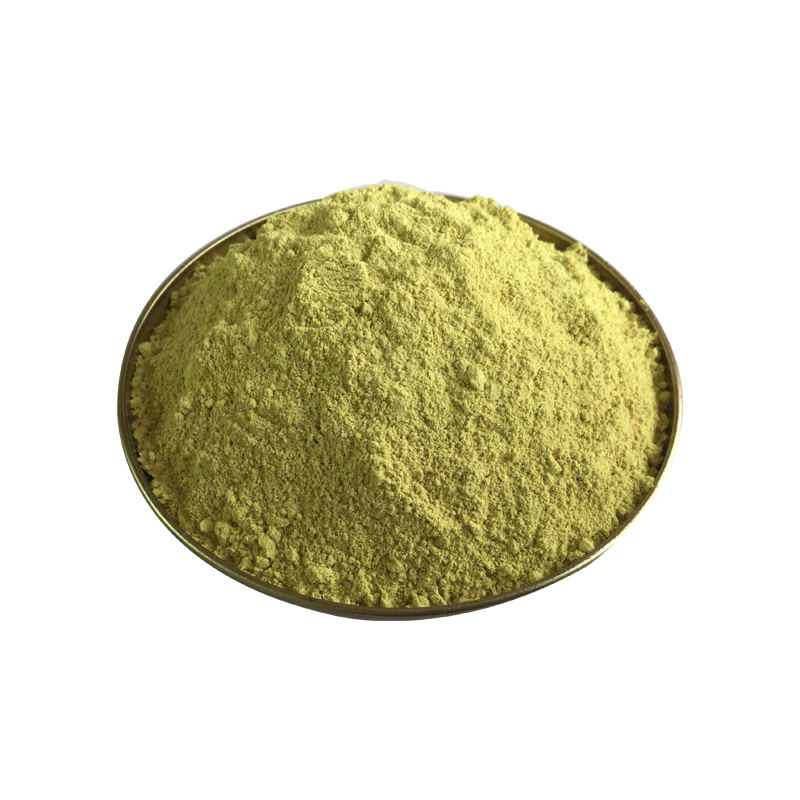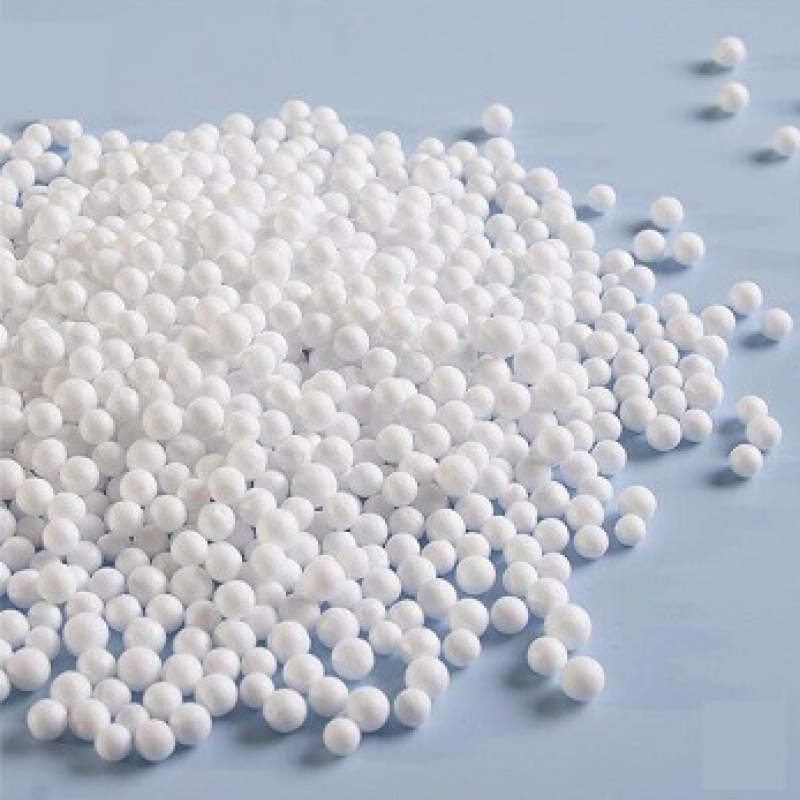Products Description of Ammonium thiosulfateCAS#7783-18-8Ammonium thiosulfate, chemical formula (NH4)2S2O3. Molecular weight 148.20. Colorless monoclinic crystals. Melting point 150℃ (decomposition), relative density 1.679. Easily soluble in water, insoluble in ethanol, slightly soluble in acetone. Its aqueous solution will precipitate sulfur when left for a long time. Above 50℃, its concentrated aqueous solution gradually decomposes into sulfur and sulfate. In the presence of ammonia and hydrocyanic acid, ammonium thiocyanate and ammonium sulfite are formed.
Contact Now
Products Description of Ammonium sulfate CAS#7783-20-2Ammonium sulfate, also known as ammonium sulfate, is the earliest nitrogen fertilizer produced and used at home and abroad. It is usually regarded as a standard nitrogen fertilizer with a nitrogen content of 20% to 30%. Ammonium sulfate is a salt of strong acid and weak base, and its aqueous solution is acidic. Ammonium sulfate is a nitrogen fertilizer and an acidic fertilizer among inorganic fertilizers. Long-term single use will cause soil acidification and hardening, which needs to be improved.
Contact Now
Products Description of Ammonium phosphate dibasic CAS#7783-28-0Diammonium phosphate, also known as diammonium hydrogen phosphate (DAP), is a compound fertilizer containing two nutrients, nitrogen and phosphorus. Diammonium hydrogen phosphate is a high-concentration quick-acting fertilizer that is easily soluble in water and has less solids after dissolution. It is suitable for various crops and soils, especially for crops that prefer nitrogen and require phosphorus. It can be used as base fertilizer or topdressing, and deep application is recommended.
Contact Now
Products Description of Rutin CAS#153-18-4Rutin is a rutin glycoside of the flavonol compound quercetin. It is a flavonoid compound extracted from plants and exists in rue, bitter buckwheat, locust tree buds, catalpa leaves, tomato stems, leaves and seed shells.Dried buckwheat that is about to bloom contains about 3%. Jujube, hawthorn, ginkgo, wolfberry, motherwort, bupleurum, selfheal, aloe, Gynostemma pentaphyllum, etc. all contain rutin.
Contact Now
Products Description of Ammonium Superphosphate (SSP) CAS#7758-23-8Ammonium Superphosphate (SSP), with the CAS number 7758-23-8, is a highly effective fertilizer used in agriculture to enrich soil with essential phosphorus and nitrogen.
Contact Now
Products Description of Glutathione CAS#70-18-8Glutathione is a tripeptide compound formed by glutamic acid, cysteine and glycine through peptide bond condensation. It is the most important low-molecular thiol for anti-oxidative stress in mammalian cells. It was discovered in 1921 and its chemical structure was determined in 1930. Dr. Al Mindell, a famous American nutrition and health expert, called glutathione a triple-effective anti-aging amino acid. It is also known as nature's antioxidant master. It has the appearance of colorless, transparent, elongated granular crystals.
Contact Now
Products Description of TetrachloroethyleneCAS#127-18-4Tetrachloroethylene, also known as perchloroethylene, is a compound formed by replacing all hydrogen atoms in ethylene with chlorine in terms of molecular structure. It was first produced by Faraday in 1821 when he pyrolyzed hexachloroethane. It is a colorless, transparent liquid with an ether-like odor. It is non-flammable. Its relative molecular mass is 165.85. Its relative density is 1.6220. Its melting point is -22.7℃. Its boiling point is 121.2℃ and 33.2℃ (4.000×103Pa). Its refractive index is 1.5055.
Contact Now
Products Description of Benzyldimethylhexadecylammonium Chloride CAS#122-18-9Cetaxel chloride, also known as hexadecyl dimethyl benzyl ammonium chloride, is a cationic quaternary ammonium surfactant and one of the components of benzalkonium chloride (benzalkonium chloride is a mixture of benzyl alkyl dimethyl ammonium, in which the alkyl groups are mainly n-C12H25 (dodecane), n-C14H29 (tetradecane) and n-C16H33 (hexadecane)).Benzyldimethylhexadecylammonium chloride Chemical PropertiesMelting point 55-65 °C(lit.)Boiling point 550.14°C (rough estimate)density 0.9089 (rou
Contact Now
Products Description of Ammonium Alginate CAS#9005-34-9Ammonium alginate is a chemical substance with the molecular formula C6H7O6NH4. Alginic acid, also known as alginate or alginates, is an anionic polysaccharide widely distributed in the cell walls of brown algae, which forms a viscous jelly by combining with water. It is also a significant component of biofilms produced by the bacterium Pseudomonas aeruginosa, the main pathogen in cystic fibrosis, conferring its high resistance to antibiotics and killing by macrophages. Its color ranges from white to yellow-brown.
Contact Now
Products Description of Benzyldimethylhexadecylammonium Chloride CAS#122-18-9Cetaxonium chloride, also known as hexadecyl dimethyl benzyl ammonium chloride, is a cationic quaternary ammonium surfactant and one of the components of benzalkonium chloride (benzalkonium chloride is a mixture of benzyl alkyl dimethyl ammonium, in which the alkyl groups are mainly n-C12H25 (dodecane), n-C14H29 (tetradecane) and n-C16H33 (hexadecane)). Cetaxonium chloride has the characteristics of high lipophilicity and low water solubility.
Contact Now
Products Description of 2,2-Dimethylthiazolidine CAS#19351-18-92,2-Dimethylthiazolidine, an organic chemical substance, molecular formula: C5H11NS.2,2-Dimethylthiazolidine Chemical PropertiesBoiling point 61 °C / 15mmHgdensity 1,02 g/cm3vapor pressure 2.01hPa at 25℃refractive index 1.5100-1.5140Fp 55°Cstorage temp. 2-8°C(protect from light)pka8.97±0.40(Predicted)form clear liquidcolor Colorless to Light orange to YellowInChIInChI=1S/C5H11NS/c1-5(2)6-3-4-7-5/h6H,3-4H2,1-2H3InChIKeySNPQRYOQWLOTFA-UHFFFAOYSA-NSMILESS1CCNC1(C)CLogP1.38CAS DataBase Refer
Contact Now
Products Description of Ferric ammonium oxalate trihydrate CAS#13268-42-3Calcium and magnesium precipitants, electroplating industryFerric ammonium oxalate trihydrate Chemical PropertiesMelting point 161°C (rough estimate)density 1,78 g/cm3solubility very soluble in H2O; insoluble in ethanolform Crystalline Powdercolor GreenWater Solubility Very soluble in water. Insoluble in alcoholSensitive Light Sensitive & HygroscopicMerck 14,517Exposure limitsACGIH: TWA 1 mg/m3NIOSH: TWA 1 mg/m3Stability:May decompose upon exposure to light.
Contact Now
Products Description of Tetrabutyl ammonium chloride CAS#1112-67-0Tetrabutylammonium chloride is a chemical substance with the chemical formula C16H36ClNTetrabutyl ammonium chloride Chemical PropertiesMelting point 83-86°Cdensity 0.98refractive index 1,421-1,423Fp >110°Cstorage temp. Store below +30°C.solubility H2O: 20 mg/mL, clear, colorlessform Crystalline Solidcolor White to brownishPH5-8 (100g/l, H2O, 20℃)PH Range5 - 8 at 100 g/l at 20°CWater Solubility SOLUBLESensitive Light Sensitiveλmaxλ: 220 nm Amax: 0.05λ: 230 nm Amax: 0.
Contact Now
Products Description of Phenylbutazone sodiumCAS#129-18-0Antipyretic and analgesic, used to treat rheumatic and rheumatoid arthritis and gout, etc.Phenylbutazone sodium Chemical Propertiesstorage temp. under inert gas (nitrogen or Argon) at 2-8°CCAS DataBase Reference129-18-0(CAS DataBase Reference)Factory and Equipment ShowFast delivery timeInventory 2-3 working days New production 7-10 working days
Contact Now
Products Description of Rutin CAS#153-18-4Rutin is the rutin glycoside of the flavonol compound quercetin. It is a flavonoid compound extracted from plants. It is found in rue, tartary buckwheat, sophora buds, catalpa leaves, tomato stems, leaves and seed shells. It is about to bloom. Current dry buckwheat contains about 3%, and jujube, hawthorn, ginkgo, wolfberry, motherwort, bupleurum, prunella vulgaris, aloe, Gynostemma pentaphyllum, etc. all contain rutin.
Contact Now
Products Description of Didecyl dimethyl ammonium chloride CAS#7173-51-5Didecyl dimethyl ammonium chloride belongs to the double-chain quaternary ammonium salt compounds, which are used in many products due to their bactericidal, virucidal and fungicidal properties. In terms of disinfection function classification, didecyl dimethyl ammonium chloride belongs to the medium-level disinfectant and is a broad-spectrum virus disinfectant.
Contact Now
Products Description of PyridiniumCAS#68909-18-2White powderPyridinium, 1-(phenylmethyl)-, ethyl methyl derivs., chlorides Chemical PropertiesBoiling point 116.34℃[at 101 325 Pa]density 1.104[at 20℃]vapor pressure 2hPa at 20℃Water Solubility 100g/L at 30℃InChIInChI=1S/C13H16N.ClH/c1-14(10-6-3-7-11-14)12-13-8-4-2-5-9-13;/h2-10H,11-12H2,1H3;1H/q+1;/p-1InChIKeyNBNVYJFZJWMHPR-UHFFFAOYSA-MSMILESC1[N+](CC2=CC=CC=C2)(C)C=CC=C1.[Cl-]LogP3 at 25℃EPA Substance Registry System1-(Phenylmethyl)pyridinium Et Me derivs., chlorides (68909-18-2)Factory and Equipment ShowFast delivery t
Contact Now
Products Description of Calcium Ammonium NitrateCAS#15245-12-2Calcium ammonium nitrate is a nitrogen fertilizer made by melting ammonium nitrate with a certain proportion of limestone and dolomite powder. The ingredients are a mixture of NH4NO3, CaCO3 and MgCO3. Calcium ammonium nitrate contains 21% to 26% nitrogen (N), and is grayish white or light yellow granules or powder. The aqueous solution is weakly alkaline.Calcium ammonium nitrate is the world's most soluble calcium-containing chemical fertilizer.
Contact Now
Products Description of Didecyl dimethyl ammonium chloride CAS#7173-51-5Didecyl dimethyl ammonium chloride belongs to the double-chain quaternary ammonium salt compounds, which are used in many products due to their bactericidal, virucidal and fungicidal properties. In terms of disinfection function classification, didecyl dimethyl ammonium chloride belongs to the medium-level disinfectant and is a broad-spectrum virus disinfectant.
Contact Now
Products Description of Ammonium bicarbonate CAS#1066-33-7Ammonium bicarbonate(1066-33-7) is a commonly used reagent for industrial and research procedures. Ammonium bicarbonate is volatile in solution and releases ammonia and CO2. This property makes ammonium bicarbonate a good buffer for such applications as lyophilization and matrix assisted laser desorption.
Contact Now
Products Description of Ammonium dihydrogen phosphate CAS#7722-76-1Diammonium phosphate is a highly effective fertilizer widely used in vegetables, fruits, rice and wheat.Ammonium dihydrogen phosphate Chemical PropertiesMelting point 190 °C (dec.) (lit.)Boiling point 87.4 °Cdensity 1.02 g/mL at 20 °Cvapor pressure 0.066 hPa (125 °C)RTECS TC6587000storage temp. Inert atmosphere,Room Temperaturesolubility H2O: 0.1 M at 20 °C, clear, colorlessform SolidSpecific Gravity1.803color White or colorlessPH Range3.8 - 4.4PH3.
Contact Now
Products Description of 3-Chloro-2-hydroxypropyltrimethyl ammonium chloride CAS#3327-22-8This product can be converted into chloride (γ-trimethylammonium-β-hydroxybutyric acid) by cyanidation and hydrolysis.
Contact Now
Products Description of 2-Amino-3,5-dibromopyrazine CAS#24241-18-72-Amino-3,5-dibromopyrazine is used to prepare conjugated polymers for neurotoxin detection.
Contact Now
Products Description of 5-CHLORO-3-METHYLBENZO[B]THIOPHENE CAS#19404-18-33-Methyl-5-chlorobenzothiophene is a pharmaceutical intermediate. 5-CHLORO-3-METHYLBENZO[B]THIOPHENE CAS#19404-18-3 Chemical PropertiesMelting point 33 °CBoiling point 87 °Cdensity 1.293±0.06 g/cm3(Predicted)storage temp. 2-8°Csolubility soluble in Methanolform powder to lumpcolor White to Yellow to OrangeCAS DataBase Reference19404-18-3(CAS DataBase Reference)Safety InformationHazard Codes Xi,XnRisk Statements 36/37/38-22Safety Statements 26-37/39Hazard Not
Contact Now

























![5-CHLORO-3-METHYLBENZO[B]THIOPHENE CAS#19404-18-3](https://d3rnfhc14zcmdf.cloudfront.net/cdn/ff/SQtnDOdiT42PpMs1NszZi7Tv_d_DUIp_Dx3j0P5hPM4/1720092385/public/styles/chanpinzhutu/public/2024-07/%E5%BE%AE%E4%BF%A1%E5%9B%BE%E7%89%87_20240702152530_3.jpg?itok=CrylVEjT)








